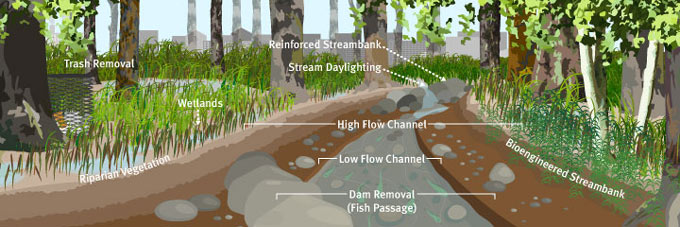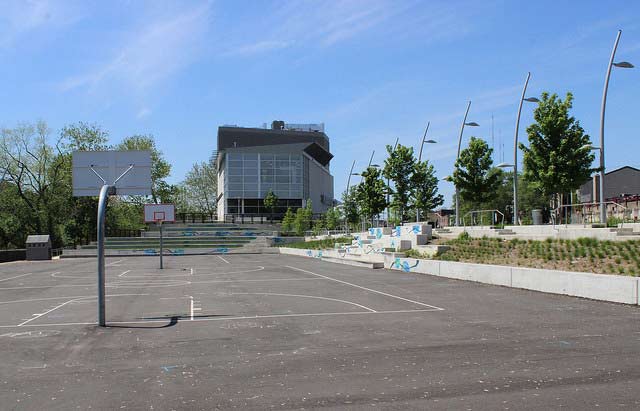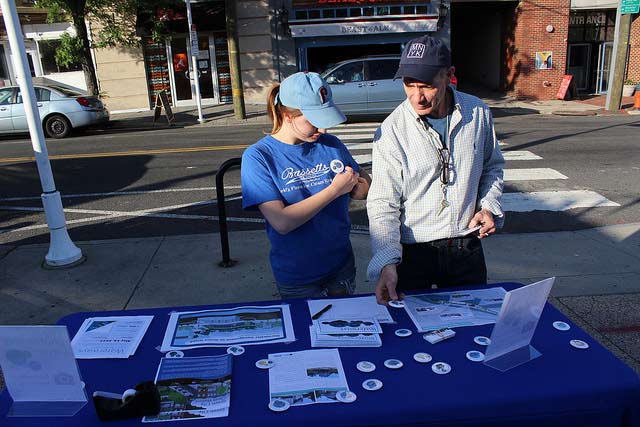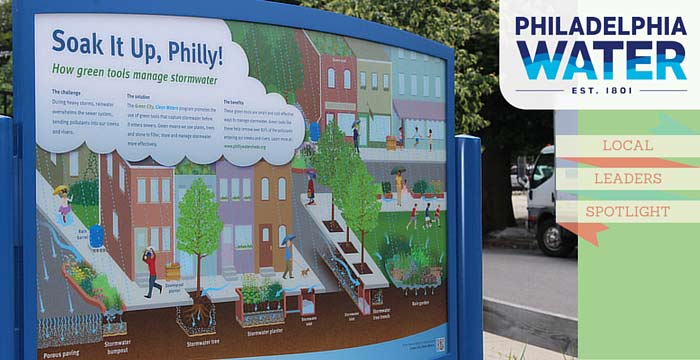
Green City, Clean Waters: How Philadelphia Water is Reducing Pollution & Stormwater
At its heart, Philadelphia Water has been a “green” organization for two centuries. The core mission for the more than 2,000 people working here is to ensure that every Philadelphian has access to safe, clean drinking water – which means protecting and enhancing the health of the Delaware and Schuylkill rivers. Today, we’re talking about how Green City, Clean Waters is one way to do that.
We pursue that goal in a number of ways, working with partners from as far away as the Catskill Mountains of New York and as close to home as the rain barrel in your backyard. Streambank restoration, sewage treatment and stormwater management all share the goal of preserving and improving the quality of our waterways.
Stormwater Management: Philadelphia Water’s Dilemma
The latter, stormwater management, has been a hot topic in Philadelphia’s green community since the launch of the Green City Clean Waters program in 2011. The plan, the first of its kind in the United States, came in response to increased pressure from the Environmental Protection Agency to curb “combined sewer overflows” – the release of diluted sewage into waterways that occurs when stormwater from heavy rains overwhelms a sewer system—not just in Philadelphia, but across the country.
Philadelphia faced 3 options:
- Do nothing and face heavy fines from the EPA.
- Spend an estimated $13 billion to expand existing traditional “gray” infrastructure and accommodate most intense storms.
- At an estimated cost of $2.4 billion over 25 years, prevent stormwater from overwhelming the system by using green infrastructure to complement traditional infrastructure and reduce the volume of water that enters sewers during storms.
Beyond the steep price tag, the “only gray” infrastructure approach has its challenges, in part, due to increasingly severe weather patterns and climate change projections. Coupled with more hard, impervious surfaces resulting from ongoing development, those intense storms could make even a $13 billion expansion less effective. In addition, years-long construction and infrastructure expansion at that scale would mean significant quality of life sacrifices for residents in the form of road closures, traffic congestion and more (think of Boston’s Big Dig. In essence, that $13 billion would be buried below city streets, and the water quality benefits, while substantial and easy to measure, would likely go unnoticed by many Philadelphians who don’t have intimate interactions with our waterways.
Green City, Clean Waters – The sustainable Solution
The Green City, Clean Waters approach flips that scenario on its head. By using green tools, almost all of which have above-ground elements like trees and plants, we’re shifting the infrastructure paradigm in such a way that investments now enrich the neighborhoods and streetscapes where people live, while still achieving the intended environmental benefits. In economics, it’s known as a “triple bottom line” approach – making investments that have economic, social, and environmental dividends.
In other words, creating a lush, plant-filled rain garden in a schoolyard, rather than ripping up the blacktop for a few months just to install a bigger sewer, has benefits beyond just keeping sewage and stormwater pollution out of our rivers. A rain garden can help fight the heat island effect on a cumulative scale, support wildlife such as pollinators, teach children in a hands-on way about nature, and create a more beautiful, less stressful learning environment. This approach still relies on gray infrastructure, but the demand on that system is reduced whenever possible by first using green to soak up, slow and filter stormwater. Read the full report on our “triple bottom line” cost-benefit analysis.
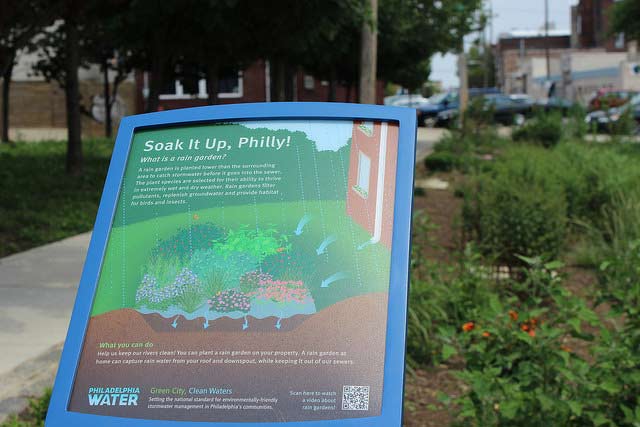
In order to have the EPA and the Pa. Dept. of Environmental Protection sign off on this solution to Philadelphia’s stormwater challenges, it took some work because no other city had yet tried to use green tools on such a scale to address such an enormous challenge. But, since the plan was approved in June 2011, Philadelphia Water and private developers have integrated more than 1,100 green stormwater tools into the city’s landscape.
Green City, Clean Waters’ goal is to reduce the volume of stormwater pollution entering the city’s sewer system by 85 percent by 2036, and we are currently outpacing greening benchmarks agreed upon when regulators approved the plan. And, with the program’s fifth year fast approaching, we’ll be ramping up green infrastructure implementation to bring even more green to the city. There are plenty of challenges, and, because we are pioneering this approach, we are constantly learning and adjusting to make sure Green City, Clean Waters provides the maximum benefit to Philadelphians.
Just as we had to sell the EPA and Pa. DEP on this revolutionary concept, getting residents and neighborhoods to understand and support this approach—an approach that, by design, has a much bigger and more meaningful presence in communities than traditional infrastructure investments—takes some work.
To that end, we work hard to engage residents and stakeholders such as the development community and get them invested in green infrastructure projects impacting their neighborhoods and livelihoods.
Photos: Philadelphia Water



